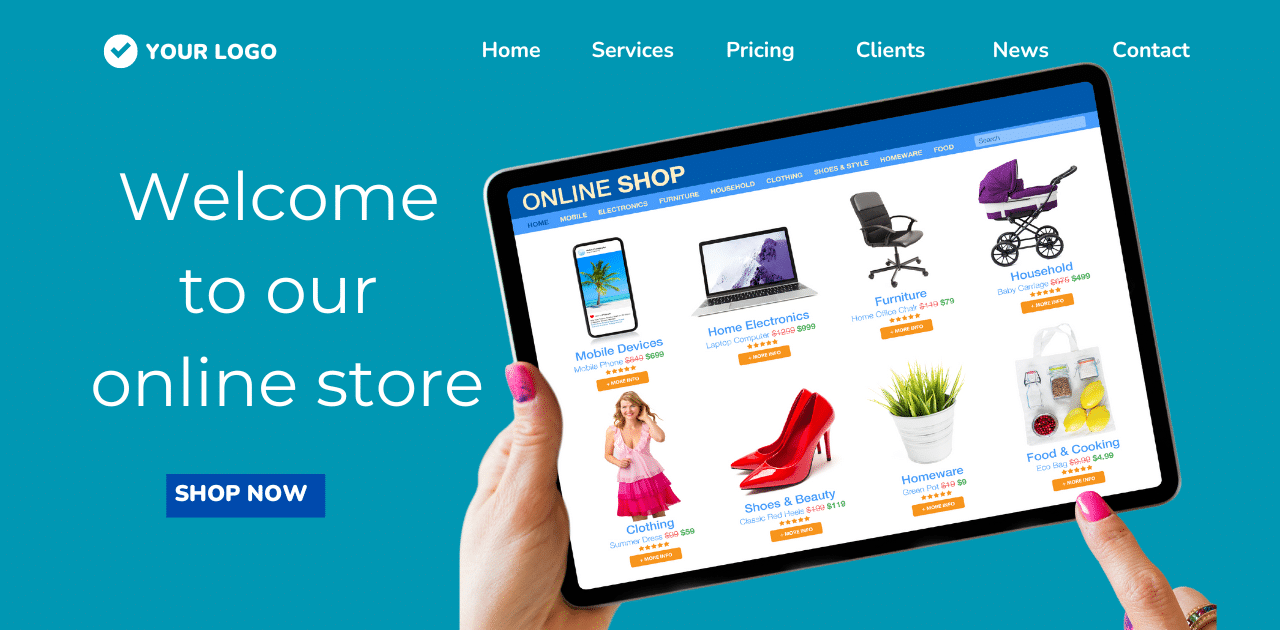Introduction:
Starting an online business from scratch can be an exciting and profitable venture. In today’s digital age, opportunities are vast, but competition is fierce. To help you navigate this journey, we present “10 Best Steps to Launch Your Online Business from Scratch”. Whether you’re a budding entrepreneur or looking to expand your existing business into the online world, this comprehensive guide will equip you with the tools and strategies you need to succeed.
From identifying a profitable niche to optimizing your website for search engines, you build a solid foundation of topics. You will learn better about market research, creating a business plan, setting up a user-friendly website, and effective digital marketing strategies. We also cover important aspects like social media marketing, email campaigns, and using SEO to drive traffic and increase your online presence. Following these proven steps can transform your vision into a thriving online business.
Please read our article till the end to unlock the secrets of launching a successful online business and stay ahead in the competitive digital marketplace.

10 Best Steps to Launch Your Online Business:
Identify your best niche according to your business and do market research:
Finding the perfect niche for your business is an important step toward success. Here’s how to identify your best niche and conduct effective market research to ensure you rank high in Google search engine results.
1. Understand your strengths and interests:
Start by listing your skills, passions, and areas of expertise. Your niche should align with what you love and what you do well. This alignment will keep you motivated and knowledgeable about your market.
2. Analyze market demand:
Use tools like Google Trends, SEMrush, and Ahrefs to measure demand in your niche. Find high search volume and trending keywords related to your interests These tools can provide insight into what people are searching for, helping you refine your niche.
3. Evaluate the competition:
Study your competitors by analyzing their website, content, and social media presence. Tools like Moz and BuzzSumo can help you understand how competitive your niche is and identify gaps you can fill with unique offerings.
4. Conduct audience research:
Identify the needs, preferences, and pain points of your target audience through surveys, forums, and social media groups. Tailor your products or services to meet their specific needs, ensuring a loyal customer base.
5. Test your niche:
Before fully committing, test your niche with a minimum viable product (MVP) or a pilot campaign. Collect feedback and make necessary adjustments to ensure market fit.
By following these steps, you can identify a profitable niche and conduct thorough market research, laying the foundation for a successful business that ranks high on Google.
Create a perfect business plan:
A good business plan is essential to guide your business to success. Here we discuss how to create a perfect business plan that ranks high in Google search engine results.
1. Executive Summary:
Start with a compelling executive summary that highlights your business concept, mission, and objectives. This section should capture the essence of your plan and entice readers to learn more, so they’re more excited about your business.
2. Company Details:
Provide a detailed description of your company, including its history, structure, and goals. Explain what your business is, what differentiates it, and what your unique value proposition is that will drive the business forward.
3. Market Analysis:
Use tools like Google Analytics and SEMrush to gather data on market trends, customer demographics, and competitor strategies, conduct flawless research, and keep AIM right.
4. Organization and Management:
Highlight their skills and give a thorough explanation of how their skills contribute to the success of your business.
5. Products or Services:
Describe your products or services in detail. Explain their benefits, features, and how they meet customer needs. Use clear and concise language to make this section easy to understand. Have all language privileges if needed.
6. Marketing and Sales Strategy:
Develop a comprehensive marketing and sales strategy that includes digital marketing strategies, social media campaigns, and SEO strategies. Identify your sales channels and customer acquisition methods.
7. Financial projections:
Provide realistic financial projections, including income statements, cash flow statements, and balance sheets. Use historical data and market analysis to support your financial forecasts.
8. Fund Request:
If you are looking for funding, clearly outline your funding needs, and potential investors, and accurately describe how the funds will be used to achieve your business goals.
By following these steps, you can create a perfect business plan that attracts investors and ranks high on Google, setting the stage for your business’s success.
Choose a business name and domain:
Choosing the right business name and domain is crucial to establishing your brand and enhancing your online presence. Here I discuss how to choose a name and domain that will rank high in Google search engine results.
1. Reflect your brand identity:
Your business name is the business brand of the future. The business name should be memorable, easy to pronounce, and easy to spell. A strong popular brand name helps create a lasting impression on your target audience.
2. Keep it simple and unique:
Avoid complicated or long names. Simple, unique names are easy for customers to remember and search for online Use tools like Namechk and NameMesh to brainstorm ideas and test availability.
3. Consider SEO keywords:
Include SEO keywords relevant to your business name to improve your search engine rankings. Use tools like Google Keyword Planner to find keywords that resonate with your industry and audience A good SEO expert can be hired if required.
4. Check Domain Availability:
Choose your domain name to match your business name. Use domain registration sites like GoDaddy or Bluehost to check the availability of your desired domain and secure it immediately. Make sure your domain name is unique.
5. Avoid trademark issues:
Conduct a trademark search to ensure your business name is not already used or protected by another company. This is a helpful resource for the USPTO database.
6. Think long term:
Choose a name and domain that will grow with your business. Avoid names that are too specific to a single product or service, as they may limit your future expansion.
By following these tips, you can choose a business name and domain that effectively represents your brand and increases your visibility on Google, paving the way for your business’s online success.
Register your business:
Registering your business is an important step towards validation and growth. Here’s how to do it right:
1. Choose a Business Structure: Choose the best legal structure (LLC, Corporation, Sole Proprietorship) for your business.
2. Choose a unique name: Make sure your business name is unique and not already used
3. Register with State and Local Authorities: File the necessary paperwork with your state’s Secretary of State’s office
4. Obtain an EIN: Apply for an Employer Identification Number (EIN) from the IRS for tax purposes
5. Obtain Licenses and Permits: Make sure you have all necessary local, state, and federal licenses and permits.
By following these steps, you’ll lay a strong foundation for your business’s success and improve your visibility on Google.
Develop your brand identity:
Building a strong brand identity is essential to stand out in a competitive market. Here we discuss how to develop your brand identity to ensure it resonates with your audience and ranks high in Google search engine results.
1. Define your brand’s core values.: Identify your brand’s mission, vision, and values. These elements should reflect what your business stands for and should guide all branding efforts. Authentic value creates trust and loyalty among customers.
2. Understand your target audience: Use tools like Google Analytics and Social Media Insights to collect data. Building your brand identity with your audience increases engagement and conversion rates to the best of online business.
3. Create the best brand messaging: Develop a unique brand voice that reflects the personality of your online business. Whether it’s formal, friendly, or quirky, consistency of tone across all channels is important. Create clear and engaging messaging that effectively communicates your value proposition.

4. Design a memorable logo and visuals: Invest in professional design to create a memorable logo and cohesive visual elements. Your brand’s color scheme, typography and imagery should be consistent across platforms. Tools like Canva and Adobe Spark can help design these elements.
5. Create a strong online presence: Make sure your website and social media profiles align with your brand identity Optimize your content with relevant keywords to improve SEO and set a perfect online business strategy.
6. Monitor and adapt: Regularly monitor your brand’s performance using tools like Google Analytics and social media metrics. Be prepared to adapt your brand strategy based on feedback and changing market trends.
By following these steps, you can develop a strong brand identity that stands out and ranks high on Google, paving the way for your business’s success.
Create your website:
Creating a website for your online business is crucial for establishing a strong digital presence. Here’s describe how to do it effectively:
1. Choose a Domain Name: Pick a memorable, keyword-rich domain name that reflects your brand.
2. Select a Hosting Provider: Use reliable hosting services like Bluehost or SiteGround for optimal performance.
3. Use a Website Builder: Choose the best platforms for your online business, like WordPress, Wix, or Shopify simplify website creation.
4. Design for User Experience: Ensure your site is mobile-friendly, fast, and easy to navigate.
5. Optimize for SEO: Use relevant keywords, meta tags, and quality content to improve search engine rankings.

By following these steps, you’ll create a professional website that attracts and converts visitors, boosting your online business success.
Set up an online store:
Setting up an online store is essential for your online business’s digital success. Here we discuss how to do it right:
1. Choose an E-commerce Platform: Select a platform like Shopify, WooCommerce, or BigCommerce for ease of use and scalability.
2. Design Your Store: Use professional themes and ensure a user-friendly, mobile-responsive design.
3. Add Products: Upload high-quality images, and detailed descriptions, and optimize with relevant keywords.
4. Set Up Payment Gateways: Integrate secure payment options like PayPal, Stripe, or credit card processors.
5. Optimize for SEO: Implement SEO best practices to improve search engine visibility and attract organic traffic.
By following these steps, you’ll create a successful online store for your online business that ranks high on Google and drives sales.
Implement digital marketing strategy:
Implementing a digital marketing strategy is crucial for online business success. Create it as below:
1. Define Your Goals: Set clear, measurable objectives for your digital marketing efforts.
2. Identify Your Target Audience: Use market research and analytics tools to understand your audience’s needs and preferences.
3. Utilize SEO: Optimize your website and content with relevant keywords to improve search engine rankings.
4. Leverage Social Media: Engage your audience on platforms like Facebook, Instagram, and Twitter.
5. Invest in Paid Advertising: Use Google Ads and social media ads to reach a broader audience quickly.
By following these steps, you’ll create a robust digital marketing strategy that enhances your online presence and drives business growth.
Create quality content:
Creating quality content is essential to driving traffic, engaging your audience, and improving your search engine rankings. Here we discuss below, how to create content that stands out and ranks high on Google

1. Understand your audience: Before creating content for your online business, understand the needs, preferences, and belief points of your target audience. Use tools like Google Analytics and Social Media Insights to collect data. Create your content to address these aspects while ensuring relevance and quality
2. Conduct keyword research: Use keyword research tools like SEMrush, Ahrefs, and Google Keyword Planner to identify high-ranking keywords in your niche. Include these keywords naturally in your content to improve SEO and attract organic traffic.
3. Create engaging and informative content: Focus on creating high-quality, informative, and engaging content that provides value to your readers. Use a mix of blog posts, articles, videos, infographics, and podcasts to keep your audience interested. Make sure your content is well-structured, easy to read, and generally visually appealing.
4. Optimize for SEO: Apply on-page SEO best practices, such as using descriptive titles, meta descriptions, and header tags. Optimize images with alt text and make sure your content is mobile-friendly. Internal linking to relevant pages can boost your SEO efforts.
5. Promote your content: Share your content on various social media platforms, email newsletters, and online communities in your online business. Engaging with your audience and encouraging shares can increase the reach and visibility perfectly of your content.
6. Monitor and improve: Regularly analyze the performance of your content using tools like Google Analytics and Search Console.
By following these strategies, you can create quality content that ranks high on Google, engages your audience, and drives business growth.
Launch and promote your business:
Launching and promoting your online business is a very important step to success. Here are the details on how to do it effectively:
1. Create a Launch Plan: Outline your launch goals, timeline, and key tasks
2. Create a pre-launch buzz: Use social media teasers, email marketing, and influencers to build excitement.
3. Optimize your website: Make sure your site is SEO-friendly, fast and mobile-responsive.
4. Social Media Leverage: Promote your launch on platforms like Facebook, Instagram, and LinkedIn.
5. Use Paid Ads: Invest in Google Ads and Social Media Ads to reach a larger audience quickly.
By following these steps, you will effectively launch and promote your online business, driving traffic and sales while ranking high on Google.
Conclusion:
Starting an online business from scratch can seem overwhelming, but it’s completely achievable with the right approach and mindset. By following the 10 best steps outlined in this guide – from identifying your niche and researching the market to building your website, setting up secure payment methods, and promoting your brand – you’ll lay a strong foundation for sustainable growth. Every step you take, whether it’s creating a business plan or optimizing your digital marketing, takes you closer to your goal of becoming a successful online entrepreneur.
Remember, success doesn’t happen overnight. It requires perseverance, adaptability, and constant learning. Take the time to test your ideas, listen to customer feedback, and refine your strategies. Don’t be afraid to make mistakes; these are often the best learning tools. Use analytics to guide your decisions, and always stay up to date with industry trends.
Whether you’re starting with limited resources or aiming for a full-scale e-commerce platform, consistency and commitment are key. Focus on your goals, believe in your vision, and take action every day. With determination and smart planning, your online business can become a powerful brand that brings value to your customers — and long-term income for you. The best time to start is now.
FAQs:
What is the first step in starting an online business from scratch?
The first step in starting an online business from scratch is to do thorough market research. Understanding your target audience, market needs and competitors is crucial. Tools like Google Trends, SEMrush, and surveys can help you gather valuable insights to shape your business idea.
How do I get the right and the best e-commerce online social media platform for my online business?
Choosing the right e-commerce platform for online business depends on your business needs. Popular options include Shopify, WooCommerce, and BigCommerce. Consider things like ease of use, scalability, customization options, and pricing. Shopify is user-friendly for beginners, WooCommerce offers extensive customization for WordPress users, and BigCommerce is great for large-scale operations.
What are the key elements of a successful digital marketing strategy for an online business?
A successful digital marketing strategy includes SEO optimization, social media marketing, email marketing, and paid advertising. Focus on creating quality content, using relevant keywords, engaging with your audience on social platforms, and using tools like Google Ads and Facebook Ads to reach a larger audience.
How can I effectively optimize my website for SEO to rank higher in Google?
To optimize your website for SEO, use relevant keywords in your content, titles, and meta descriptions. Make sure your website is mobile-friendly, fast, and has a clean, easy-to-navigate design. Additionally, use alt text for images, create quality backlinks, and update your content regularly to keep it fresh and relevant.
What are some effective ways to build and engage my audience before starting my online business?
Creating a pre-launch marketing plan for an online business involves building and engaging your audience before launching. Use social media teasers, email newsletters, and blog posts to build excitement. Collaborate with influencers and take advantage of online communities to spread the word. Offering sneak peeks, exclusive content, and early bird discounts can also help build anticipation and engagement.
🔔 Stay Updated with Tech Terapias
Join our free newsletter and never miss AI tools, blogging tips & smart tech updates!




